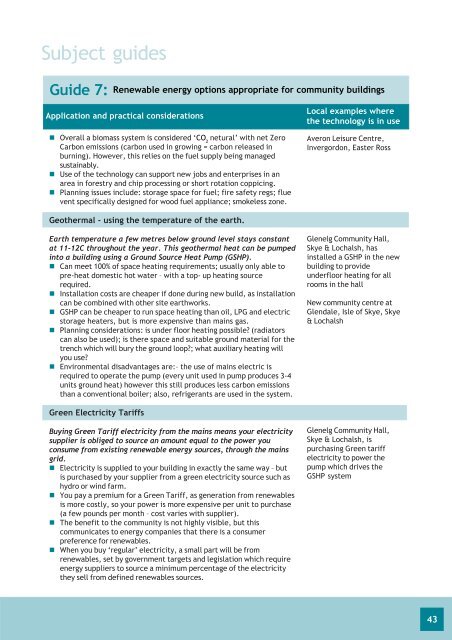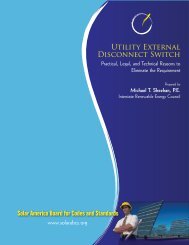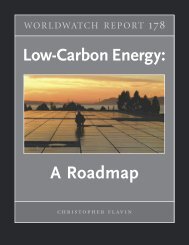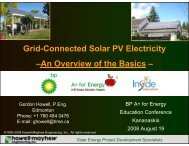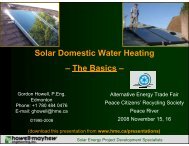A Practical Guide to Creating a Sustainable Community Building
A Practical Guide to Creating a Sustainable Community Building
A Practical Guide to Creating a Sustainable Community Building
You also want an ePaper? Increase the reach of your titles
YUMPU automatically turns print PDFs into web optimized ePapers that Google loves.
Subject guides<strong>Guide</strong> 7: Renewable energy options appropriate for community buildingsApplication and practical considerations Overall a biomass system is considered ‘CO 2netural’ with net ZeroCarbon emissions (carbon used in growing = carbon released inburning). However, this relies on the fuel supply being managedsustainably. Use of the technology can support new jobs and enterprises in anarea in forestry and chip processing or short rotation coppicing. Planning issues include: s<strong>to</strong>rage space for fuel; fire safety regs; fluevent specifically designed for wood fuel appliance; smokeless zone.Local examples wherethe technology is in useAveron Leisure Centre,Invergordon, Easter RossGeothermal - using the temperature of the earth.Earth temperature a few metres below ground level stays constantat 11-12C throughout the year. This geothermal heat can be pumpedin<strong>to</strong> a building using a Ground Source Heat Pump (GSHP). Can meet 100% of space heating requirements; usually only able <strong>to</strong>pre-heat domestic hot water – with a <strong>to</strong>p- up heating sourcerequired. Installation costs are cheaper if done during new build, as installationcan be combined with other site earthworks. GSHP can be cheaper <strong>to</strong> run space heating than oil, LPG and electrics<strong>to</strong>rage heaters, but is more expensive than mains gas. Planning considerations: is under floor heating possible? (radia<strong>to</strong>rscan also be used); is there space and suitable ground material for thetrench which will bury the ground loop?; what auxiliary heating willyou use? Environmental disadvantages are:– the use of mains electric isrequired <strong>to</strong> operate the pump (every unit used in pump produces 3-4units ground heat) however this still produces less carbon emissionsthan a conventional boiler; also, refrigerants are used in the system.Glenelg <strong>Community</strong> Hall,Skye & Lochalsh, hasinstalled a GSHP in the newbuilding <strong>to</strong> provideunderfloor heating for allrooms in the hallNew community centre atGlendale, Isle of Skye, Skye& LochalshGreen Electricity TariffsBuying Green Tariff electricity from the mains means your electricitysupplier is obliged <strong>to</strong> source an amount equal <strong>to</strong> the power youconsume from existing renewable energy sources, through the mainsgrid. Electricity is supplied <strong>to</strong> your building in exactly the same way – butis purchased by your supplier from a green electricity source such ashydro or wind farm. You pay a premium for a Green Tariff, as generation from renewablesis more costly, so your power is more expensive per unit <strong>to</strong> purchase(a few pounds per month – cost varies with supplier). The benefit <strong>to</strong> the community is not highly visible, but thiscommunicates <strong>to</strong> energy companies that there is a consumerpreference for renewables. When you buy ‘regular’ electricity, a small part will be fromrenewables, set by government targets and legislation which requireenergy suppliers <strong>to</strong> source a minimum percentage of the electricitythey sell from defined renewables sources.Glenelg <strong>Community</strong> Hall,Skye & Lochalsh, ispurchasing Green tariffelectricity <strong>to</strong> power thepump which drives theGSHP system43


